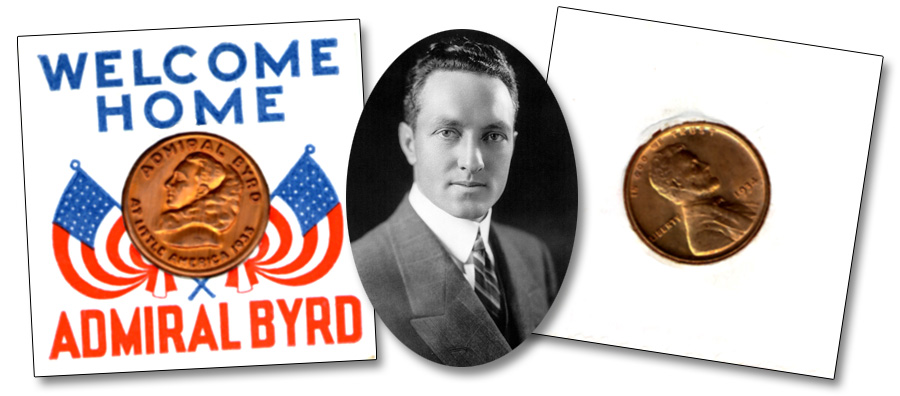
Rear Admiral Richard Evelyn Byrd (1888-1957) was an American Naval officer best known for his feats of exploration and discovery, some by land and others by air. He was among the earliest flyers to cross the Atlantic and to fly over the Arctic and Antarctic regions. Indeed, he claimed his flights were the first ever visits to the North Pole and the South Pole. Byrd’s first expedition to the Antarctic began in 1928 and involved two ships and three airplanes. Operating from a base camp named “Little America” on the Ross Ice Shelf, the expedition began lengthy explorations with dog sleds and by air. Photographic and geological surveys were on the menu that summer. On November 28 of the following year, Byrd and three others flew from their base camp to the South Pole and back, a trip that took 18 hours and 41 minutes and entered Byrd securely in the pantheon of 20th century explorers. On his 1930 return trip to the Antarctic, the Byrd Expedition took along a 19-year old Boy Scout, the first ever to visit the frozen southern wasteland. In 1934, Byrd spent five winter months alone in Little America operating a meteorological station and nearly died from carbon monoxide poisoning from a poorly ventilated heater. Three rescue trips were tried, the first two ending with snow, darkness, and mechanical troubles. Three persons finally made it to Byrd’s camp on the third try, and on October 12 Byrd was finally ferried away by air, in poor health but quick to recover. His exploits at the South Pole were eagerly listened to by radio in all parts of the globe. Richard Byrd was the youngest American ever made an Admiral, and he was also awarded the Congressional Medal of Honor among numerous other important military medals. A commemorative stamp was issued by the United States to celebrate his days in “Little America.”
No doubt many types of commemorative items were made to celebrate the exploits of Admiral Byrd, including the neat “capped” cent in my exonumia collection that is pictured here. A “capped” cent is a regular-issue U.S. cent that is encased in a one-sided copper sheath of sorts that envelops the host coin. The author owns several different styles for various important events; we’ll no doubt see others here in the future. The “obverse” of this particular cap features a bust of Byrd to left wearing a heavy-duty hooded parka. ADMIRAL BYRD arcs above the portrait, and AT LITTLE AMERICA 1935 curves below. It is housed in the original flag-bedecked cardboard holder with slowly yellowing cellophane wrapped around it for protection. The cellophane has performed admirably over the last 79 years, and the capped portion is as fresh and “mint” red as the day it was produced. And for good measure, the host coin is a treat by itself. A frosty, lustrous, and sharply struck 1934 Lincoln cent, easily MS-64 RD or finer, glows brightly every time I turn my Admiral Byrd capped cent over. That’s all for now — but the next time we meet I’ll show you how a cent plus “99 more” will make a dollar!





